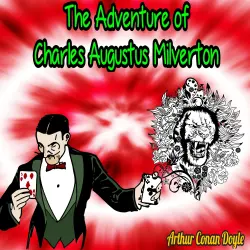
An Occurrence at Owl Creek Bridge
Ambrose Bierce
Unabridged
26 Minuten
Hinweis: Für das Abspielen der Hörbücher oder Hörspiele können auf den jeweiligen Plattformen, wie z.B. Spotify, Kosten anfallen. Lismio hat keinen Einfluss darauf, welche Hörbücher und Hörspiele bei dem Service verfügbar sind.
Einige Artikel enthalten Affiliate-Links (gekennzeichnet mit einem Sternchen *). Wenn ihr auf diese Links klickt und Produkte kauft, erhalten wir eine kleine Provision, ohne dass für euch zusätzliche Kosten entstehen. Eure Unterstützung hilft, diese Seite am Laufen zu halten und weiterhin nützlichen Content zu erstellen. Danke für eure Unterstützung!
Vom Herausgeber
An Occurrence at Owl Creek Bridge by Ambrose Bierce (1890) is a short story by the American writer and Civil War veteran Ambrose Bierce. Described as "one of the most famous and frequently anthologized stories in American literature", it was originally published by The San Francisco Examiner on July 13, 1890, and was first collected in Bierce's book Tales of Soldiers and Civilians (1891). The story, which is set during the American Civil War, is known for its irregular time sequence and twist ending. Bierce's abandonment of strict linear narration in favor of the internal mind of the protagonist is an early example of the stream of consciousness narrative mode.
Plot:
Peyton Farquhar, a civilian who is also a wealthy planter and slave owner, is being prepared for execution by hanging from an Alabama railroad bridge during the American Civil War. Six military men and a company of infantrymen are present, guarding the bridge and carrying out the sentence. Farquhar thinks of his wife and children and is then distracted by a noise that, to him, sounds like an unbearably loud clanging; it is actually the ticking of his watch. He considers the possibility of jumping off the bridge and swimming to safety if he can free his tied hands, but the soldiers drop him from the bridge before he can act on the idea.
In a flashback, Farquhar and his wife are relaxing at home one evening when a soldier dressed in Confederate gray rides up to the gate. Farquhar, a supporter of the Confederacy, learns from him that Union troops have seized the Owl Creek railroad bridge and repaired it. The soldier suggests that Farquhar might be able to burn the bridge down if he can slip past its guards. He then leaves, but doubles back after nightfall to return north the way he came. The soldier is actually a disguised Union scout who has lured Farquhar into a trap, as any civilian caught interfering with the railroads will be hanged.
The story returns to the present, and the rope around Farquhar's neck breaks when he falls from the bridge into the creek. He frees his hands, pulls the noose away, and rises to the surface to begin his escape. His senses now greatly sharpened, he dives and swims downstream to avoid rifle and cannon fire. Once he is out of range, he leaves the creek to begin the journey to his home, 30 miles (48 km) away. Farquhar walks all day long through a seemingly endless forest, and that night he begins to hallucinate, seeing strange constellations and hearing whispered voices in an unknown language.
He travels on, urged by the thought of his wife and children despite the pains caused by his ordeal. The next morning, after having apparently fallen asleep while walking, he finds himself at the gate to his plantation.
Plot:
Peyton Farquhar, a civilian who is also a wealthy planter and slave owner, is being prepared for execution by hanging from an Alabama railroad bridge during the American Civil War. Six military men and a company of infantrymen are present, guarding the bridge and carrying out the sentence. Farquhar thinks of his wife and children and is then distracted by a noise that, to him, sounds like an unbearably loud clanging; it is actually the ticking of his watch. He considers the possibility of jumping off the bridge and swimming to safety if he can free his tied hands, but the soldiers drop him from the bridge before he can act on the idea.
In a flashback, Farquhar and his wife are relaxing at home one evening when a soldier dressed in Confederate gray rides up to the gate. Farquhar, a supporter of the Confederacy, learns from him that Union troops have seized the Owl Creek railroad bridge and repaired it. The soldier suggests that Farquhar might be able to burn the bridge down if he can slip past its guards. He then leaves, but doubles back after nightfall to return north the way he came. The soldier is actually a disguised Union scout who has lured Farquhar into a trap, as any civilian caught interfering with the railroads will be hanged.
The story returns to the present, and the rope around Farquhar's neck breaks when he falls from the bridge into the creek. He frees his hands, pulls the noose away, and rises to the surface to begin his escape. His senses now greatly sharpened, he dives and swims downstream to avoid rifle and cannon fire. Once he is out of range, he leaves the creek to begin the journey to his home, 30 miles (48 km) away. Farquhar walks all day long through a seemingly endless forest, and that night he begins to hallucinate, seeing strange constellations and hearing whispered voices in an unknown language.
He travels on, urged by the thought of his wife and children despite the pains caused by his ordeal. The next morning, after having apparently fallen asleep while walking, he finds himself at the gate to his plantation.








